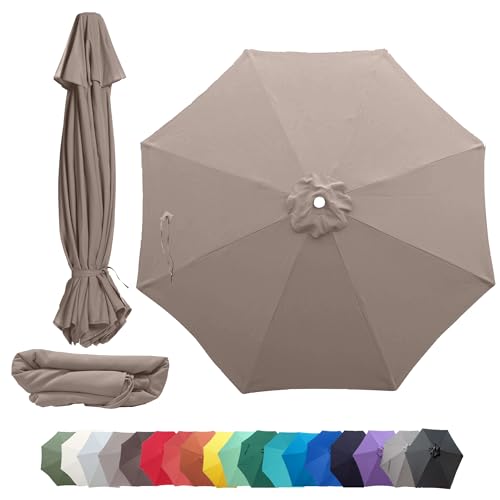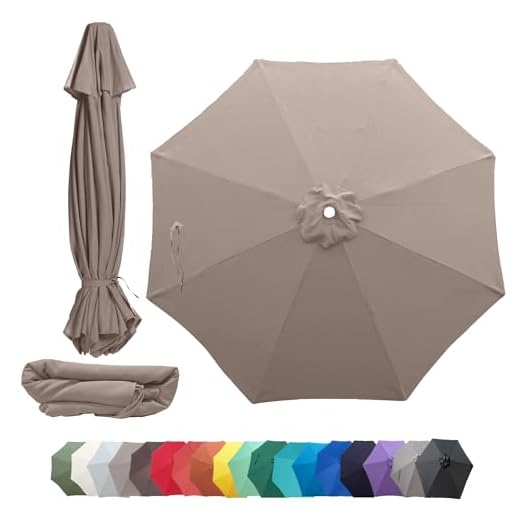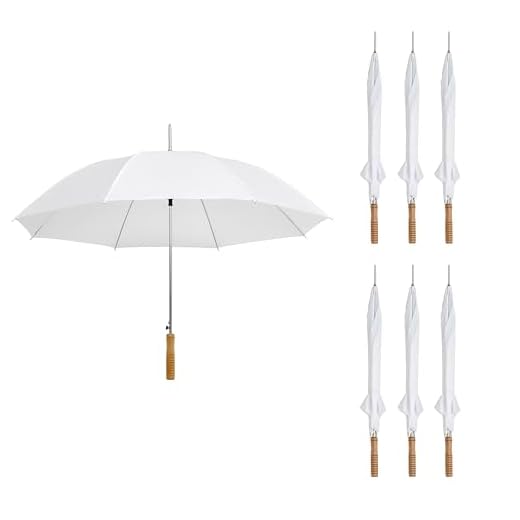
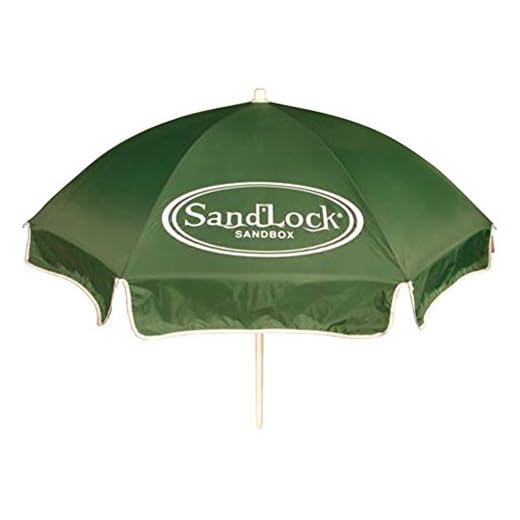

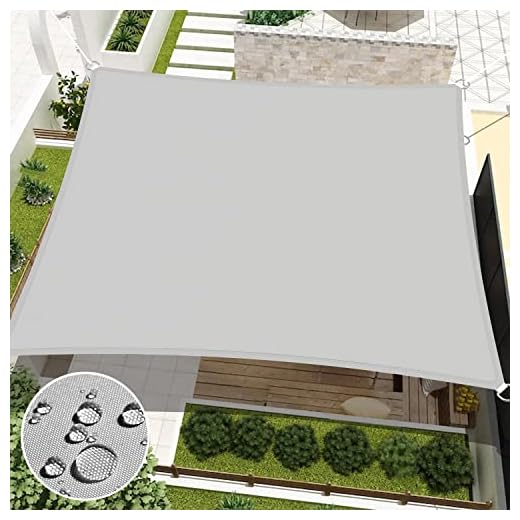
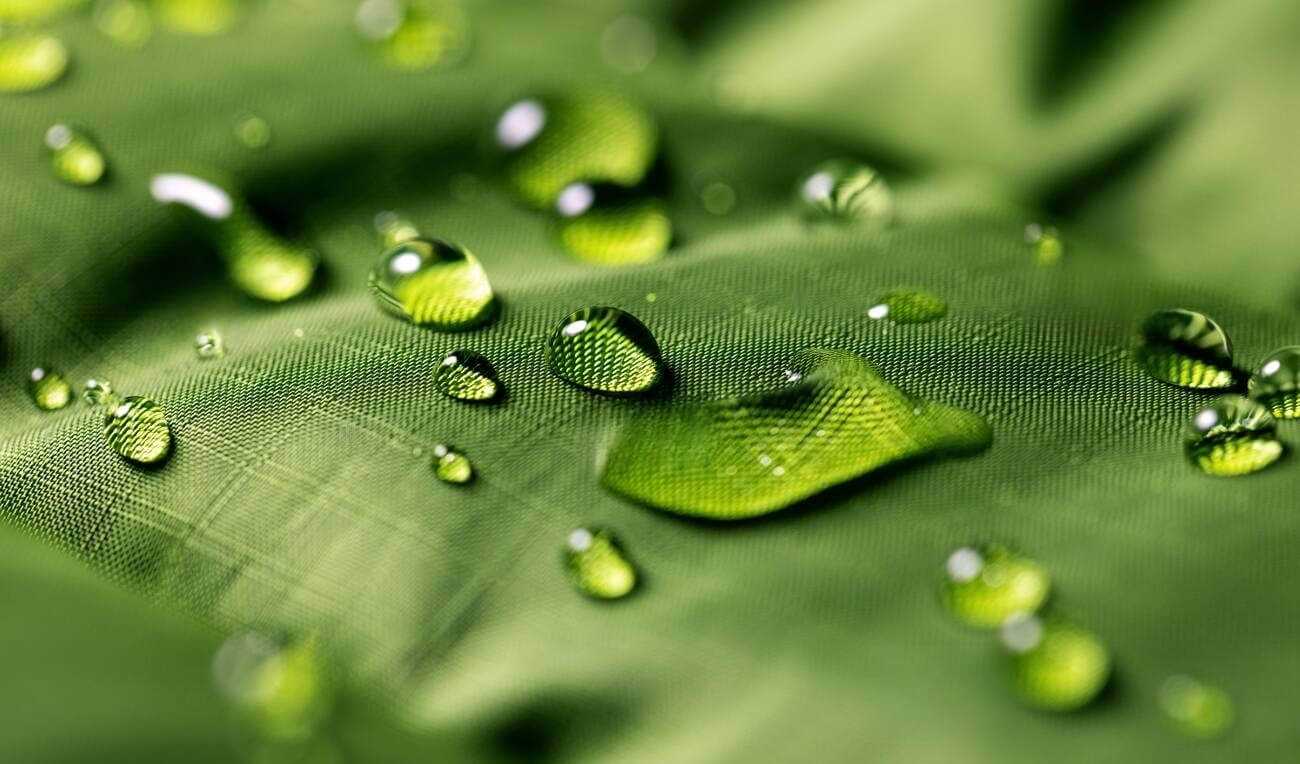
For those seeking durability and protection from rain, the selection of the right fabric is paramount. This article will guide you through the most reliable options available, ensuring that your canopy remains functional and stylish even in adverse weather conditions.
Readers will find valuable insights into various textiles, including their characteristics, strengths, and weaknesses. Whether you’re a casual user or someone who relies on a canopy for professional purposes, understanding these materials will enhance your purchasing decisions.
This piece will cover popular choices such as nylon, polyester, and PVC, alongside innovative advancements in fabric technology. You will gain clarity on water resistance ratings, breathability, and maintenance tips, equipping you with the knowledge to make an informed choice for your next purchase.
Best Waterproof Material for Umbrella
Choosing the right fabric can determine the durability and performance of a canopy. A popular choice among manufacturers is polyester, particularly when treated with a water-resistant coating. This option often provides a lightweight yet sturdy solution, making it a preferred selection for various types of canopies.
Nylon is another strong candidate, known for its ability to repel moisture effectively. It tends to be more flexible and can withstand windy conditions better than some other options. Additionally, some brands utilize specialized coatings or laminations to enhance the water-repelling properties of these fabrics.
Factors to Consider
Several factors impact the choice of fabric:
- Weight: Lighter materials are easier to carry but may sacrifice strength.
- Durability: Consider how the fabric holds up against wear and tear, especially in windy conditions.
- UV Resistance: Some fabrics also offer protection against harmful sun rays, extending the lifespan of the canopy.
Additionally, the construction of the seams and the type of coating applied play a significant role in preventing leaks. Look for options with sealed seams to enhance water resistance further.
In summary, polyester and nylon are leading candidates for effective coverage, with specific coatings adding to their protective qualities. Assessing individual needs and environmental factors will guide the best choice for reliable shelter.
Evaluating Polyester vs. Nylon for Umbrella Fabric
Polyester and nylon both serve as popular choices for the construction of rain shields due to their specific attributes. Polyester is known for its resistance to UV rays and fading, making it suitable for prolonged outdoor use. Nylon, on the other hand, boasts greater tensile strength, which provides enhanced durability against strong winds and stress.
When assessing the two, consider the following factors:
- Weight: Polyester tends to be heavier than nylon, which can influence portability. If a lightweight option is a priority, nylon may be more favorable.
- Water Resistance: Both fabrics can be treated for increased water repellency. However, nylon often retains its water resistance longer than polyester, particularly when subjected to heavy rain.
- Breathability: Polyester has better breathability compared to nylon, which can lead to reduced condensation under certain conditions.
- Cost: Generally, polyester is less expensive than nylon, making it a budget-friendly option for many consumers.
In conclusion, the choice between these two fabrics depends on specific needs. If lightweight and durability are primary concerns, nylon may be the better alternative. Conversely, for those prioritizing UV resistance and cost-effectiveness, polyester stands out.
The Role of PVC Coating in Enhancing Waterproofness
PVC coating significantly improves the ability of fabrics to resist moisture. This synthetic layer creates a barrier that prevents water from penetrating the material, ensuring better protection against rain and wet conditions.
The application of PVC not only enhances durability but also contributes to the overall performance of the item. Its flexibility allows it to withstand various weather conditions without losing functionality, making it a preferred choice for outdoor gear.
Advantages of PVC Coating
- Durability: PVC coatings are known for their resistance to wear and tear, extending the lifespan of the fabric.
- Water Resistance: The coating forms a solid barrier, preventing water from seeping through.
- Easy Maintenance: Surfaces coated with PVC are easier to clean and maintain, as dirt and grime do not adhere easily.
- Cost-Effectiveness: This coating is often more affordable compared to other waterproofing treatments.
In addition to these benefits, PVC coatings can be manufactured in various colors and finishes, allowing for aesthetic versatility. This characteristic enables the creation of visually appealing items without compromising functionality.
When selecting products with PVC coating, consider the thickness and quality of the coating, as these factors will directly influence performance. Thicker coatings typically provide superior protection, but may also add weight.
Comparative Analysis of Gore-Tex and Other High-Tech Fabrics
Gore-Tex stands out among contemporary fabrics due to its unique construction and performance features. It consists of a microporous membrane that allows moisture vapor to escape while preventing water droplets from penetrating. This characteristic makes it a preferred choice for various applications, especially in inclement weather conditions.
Other advanced textiles, such as eVent and Dermizax, also offer impressive performance. eVent employs a similar microporous technology but claims to provide superior breathability, making it a strong contender for active outdoor enthusiasts. Dermizax, on the other hand, utilizes a polyurethane membrane that is both waterproof and elastic, ensuring comfort during movement.
Performance Comparison
| Feature | Gore-Tex | eVent | Dermizax |
|---|---|---|---|
| Water Resistance | Excellent | Excellent | Very Good |
| Breathability | High | Very High | High |
| Durability | Very Good | Good | Very Good |
| Weight | Moderate | Light | Light |
In practical applications, the choice of fabric often depends on specific user needs. For instance, if breathability is the primary concern, eVent may be more suitable for high-intensity activities. Conversely, Gore-Tex remains a reliable choice for all-around performance, particularly in conditions where durability is critical.
Ultimately, understanding the specific features and benefits of each fabric allows users to make informed decisions tailored to their individual needs and preferences.
Maintenance Tips for Prolonging the Life of Waterproof Canopies
Regular cleaning is key to maintaining your canopies. After use, shake off excess water and debris. Rinse the fabric with clean water to prevent dirt buildup and preserve its protective qualities.
Store your canopies properly. Ensure they are completely dry before folding to prevent mold growth. Utilize a dedicated storage bag or case to shield them from dust and physical damage.
Additional Care Guidelines
- Avoid High Winds: Do not expose your canopies to strong gusts, as this can cause structural damage.
- Inspect Regularly: Check for tears or damage after each use, and make repairs promptly to avoid further deterioration.
- Use a Mild Soap: When washing, opt for a gentle detergent to maintain the fabric’s integrity.
- Store Upright: Keep canopies in an upright position when not in use to maintain shape and prevent bending.
Adhering to these guidelines can significantly extend the lifespan of your protective coverings, ensuring they remain functional and effective over time.
Best waterproof material for umbrella
Features
| Part Number | top 9x8 |
| Model | 9ft 8 ribs canopy taupe |
| Color | Taupe |
| Size | 9 ft x 108 inches |
Features
| Part Number | 10X-UM48 |
| Model | 10X-UM48 |
| Color | White |
| Release Date | 2013-01-10T00:00:01Z |
| Size | 48" |
Features
| Part Number | SLA-04UMB |
| Is Adult Product | |
| Size | One Size |
Features
| Part Number | Travel Umbrella |
| Model | Umbrella |
| Color | Black - Travel Umbrella (3 Pack) |
| Size | Multi-Packs |
| Number Of Pages | 0 |
Features
| Part Number | RS12ER1015LGY |
| Model | RS12ER1015LGY |
| Color | Light Grey |
| Size | 10' x 15' |
Video:
FAQ:
What are the best materials for waterproof umbrellas?
Some of the best materials for waterproof umbrellas include nylon, polyester, and Pongee fabric. Nylon is known for its durability and lightweight nature, making it a popular choice. Polyester offers good water resistance and is often treated with coatings for added protection. Pongee fabric is a high-quality polyester that has a soft feel and excellent waterproof properties. Each of these materials has its own advantages, so the best choice depends on personal preferences and specific needs.
How does the coating on umbrella fabric affect its waterproofing?
The coating on umbrella fabric plays a significant role in its waterproofing capabilities. Many umbrellas are treated with a water-repellent coating, such as polyurethane, which helps to prevent water from soaking through the material. This coating creates a barrier that causes water to bead up and roll off the surface. The quality and thickness of the coating can impact how well the umbrella performs in heavy rain, so it’s important to consider this factor when choosing an umbrella.
Are there any eco-friendly waterproof materials for umbrellas?
Yes, there are eco-friendly options available for waterproof umbrellas. Some manufacturers are now producing umbrellas made from recycled materials, such as recycled PET (rPET) fabric. This type of material not only provides good waterproofing but also reduces waste by repurposing plastic bottles. Additionally, some brands are exploring organic cotton treated with sustainable water-repellent finishes. Choosing an eco-friendly umbrella can help reduce environmental impact while still providing reliable protection from the rain.
What should I consider when choosing a waterproof umbrella?
When selecting a waterproof umbrella, consider factors such as material, size, weight, and durability. The material should offer good water resistance; nylon and polyester are common choices. The size should be suitable for your needs, whether you prefer a compact travel umbrella or a larger one for more coverage. Weight is also important, especially if you’ll be carrying it around frequently. Finally, examine the construction quality, including the frame and rib strength, to ensure it can withstand windy conditions while remaining functional in the rain.

